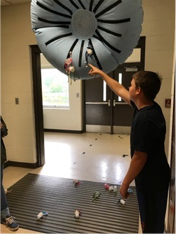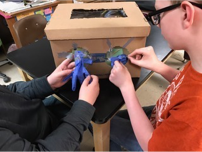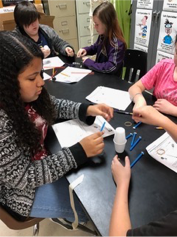Sixth grade students in Minnie Bailey’s and Tammy Stewarts’s classes at Cumberland Elementary School recently “got sick” to help educate students on what a virus is, how it spreads and mutates, and how to control the inevitable outcome. Students in schools will get sick; however, knowledge of containment and control techniques are a critical part of the lessons learned in the completion of the “Outbreak” unit provided through the Kentucky Valley Education Cooperative (KVEC) and Science Technology Engineering and Mathematics Program (STEM).
Schools in the KVEC district were allowed to register for use of the Mobile Innovations Learning Lab, MILL for short, and participate in the Outbreak learning initiative. Students were instructed to build Containment Boxes using simple materials where a simulated virus was contained in a vial. Students had to develop a way to transfer the virus without contaminating the box, room, and/or themselves. The teachers had already assisted in the process by placing the simulated virus material (a glow in the dark powder) on common areas in the room. Black lights were used to determine how readily tiny residue particles can be spread without knowledge of their existence. Student Trinity Sheeks stated, “Viruses are spread a lot easier than I thought!” Classmate Allie Haines remarked, “My favorite part was building the contamination unit. It was hard but it was a lot of fun and was challenging!”
After students completed the spread and containment lessons, instruction occurred on how a virus looks, its structure and how it mutates to adapt to its changing environment. Virus models and mutated virus models were construted which were used in a simulated attack of a cell. Haleigh Pustelak said “I liked building the anti-virus because it was fun to make with my partners!” Students were also instructed on global issues of epidemics and pandemics, learning how the Center for Disease Control (CDC) plans and determines what types of vaccines and evasive measures are needed to prevent the spreading of the ever changing viruses.

Mrs. Katrina Sloan, the lead STEM coordinator for KVEC, plans and coordinates different STEM activities that can be housed in the MILL. Items that are not readily available to schools are purchased and stored in the MILL allowing for delivery of the mobile classroom to individual schools. This permits schools who could not otherwise purchase all the equipment or supplies to participate in STEM activities.
District: Harlan County
Author: David J. Hensley, IC


